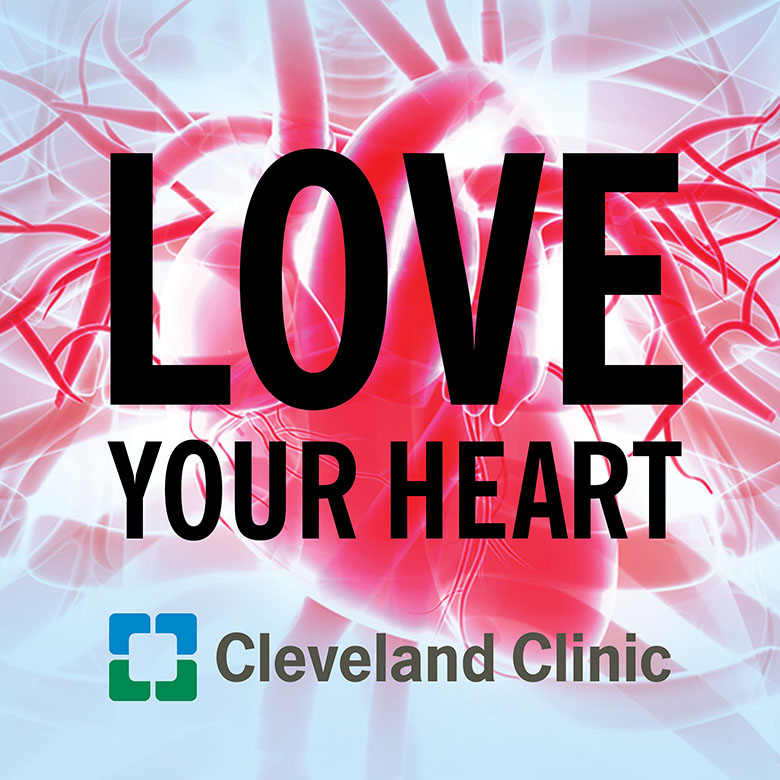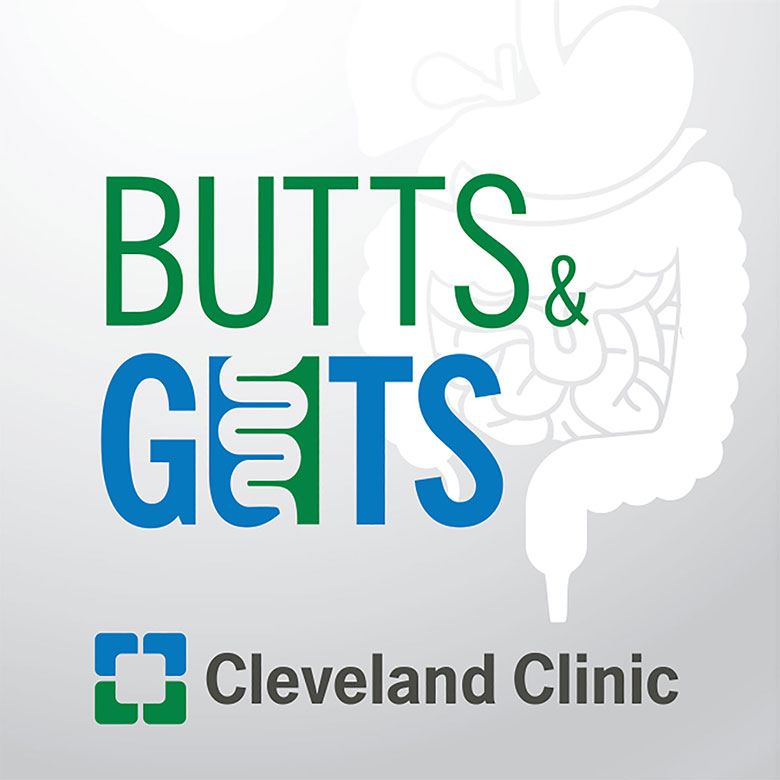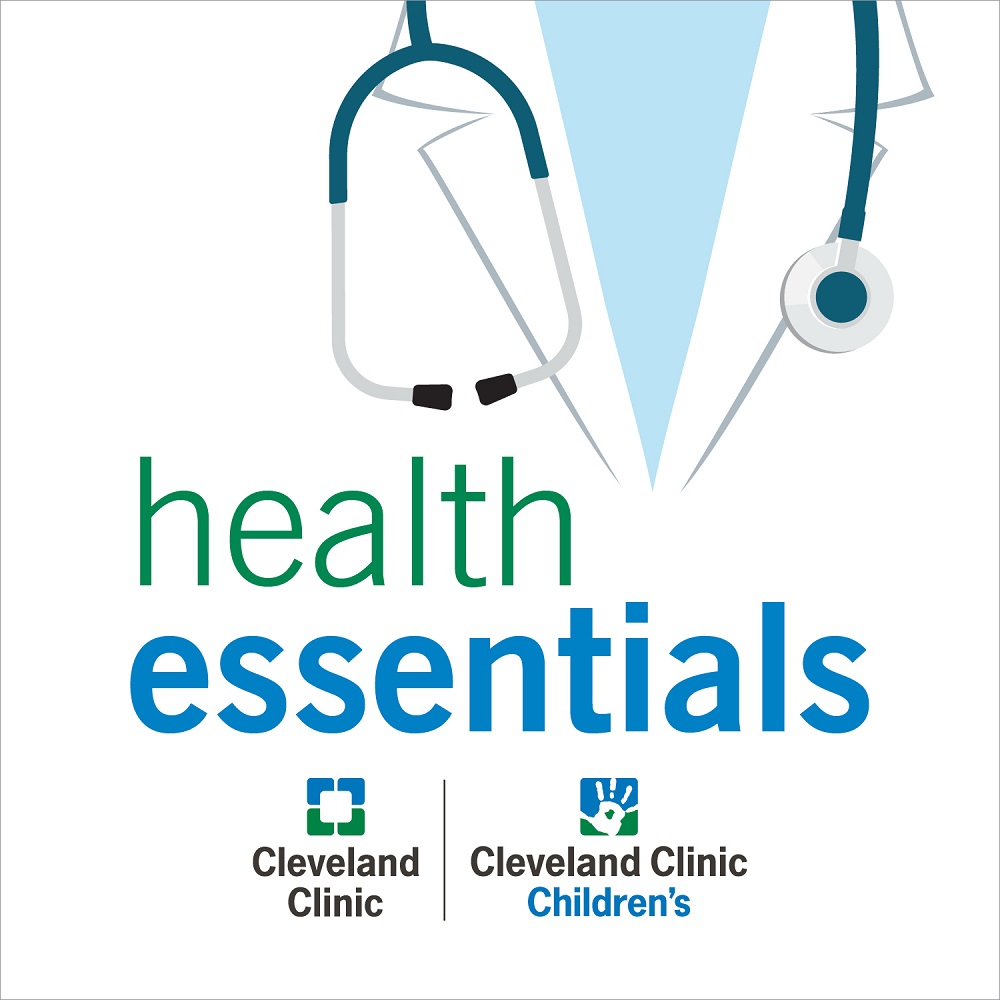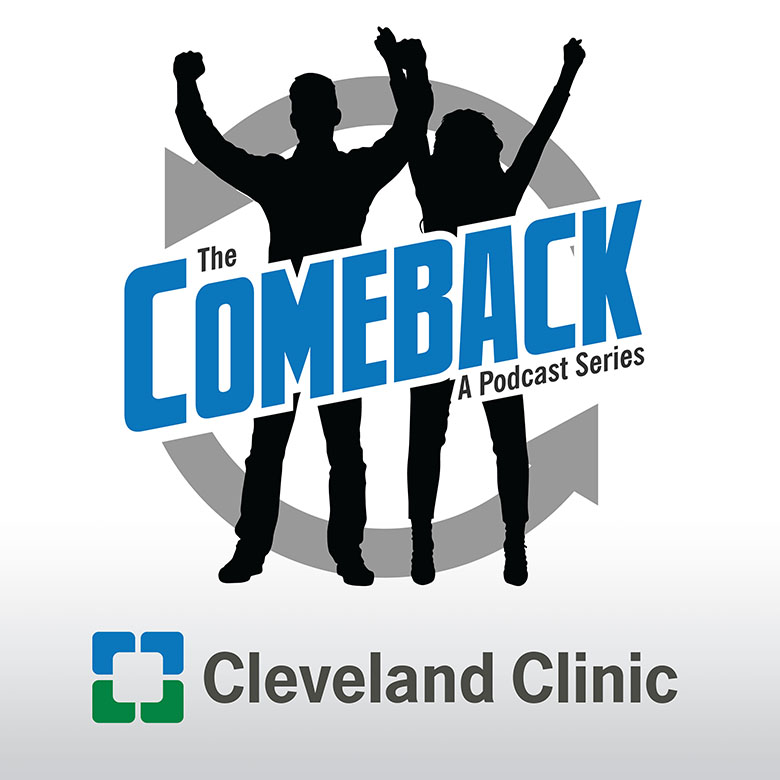Coronary Artery Bypass Surgery (CABG)

Coronary artery bypass grafting (CABG), also known as heart bypass surgery, is a procedure to restore blood flow to areas of your heart. Dr. Donna Kimmaliardjuk explains who may need this procedure and other commonly asked questions about CABG.
Read more about the State of the Art: Coronary Artery Bypass Surgery Center at Cleveland Clinic
Learn more about coronary artery bypass graft surgery
Subscribe: Apple Podcasts | Podcast Addict | Buzzsprout | Spotify
Coronary Artery Bypass Surgery (CABG)
Podcast Transcript
Announcer:
Welcome to Love Your Heart, brought to you by Cleveland Clinic's Sydell and Arnold Miller Family Heart, Vascular and Thoracic Institute. These podcasts will help you learn more about your heart, thoracic, and vascular systems, ways to stay healthy and information about diseases and treatment options. Enjoy!
Donna Kimmaliardjuk, MD:
Hi, I'm Dr. Kimmaliardjuk and I'm a cardiac surgeon at Cleveland Clinic. My interests or specialty is really coronary artery bypass grafting, including beating heart or off-pump bypass surgery and multi-arterial bypass surgery, as well as some minimally invasive bypass surgery. I thought I'd start by talking about what is coronary artery disease? So really what it is blockages in the blood flow to our heart. Our heart is a muscle, and just like any other muscle in our body, it needs blood supply. There are coronary arteries or the blood vessels that bring blood to our heart that can get blockages over time. Those blockages are often what we call plaque or calcium. So, if you hear any of those words, that's really all the same thing that we're talking about. And it should be a nice straight tube, our arteries that bring blood to our heart, but those blockages make those tubes narrower or smaller, and so blood can't get through the blood vessel as quickly as it needs to our heart muscles so our heart can pump blood to our body.
That's often when folks will start describing or experiencing things like chest pains or chest pressure or shortness of breath because the muscle is hungry for oxygen, and it can't get it as quickly as it needs to. So, when we see evidence of that by the patient telling us that they're experiencing these symptoms, and then when we see on testing that we do, which I'll talk about in a few minutes, then that often is what tells us when we need to do something about those blockages. As a cardiac surgeon, the way I treat it is with open heart bypass surgery.
So, what is bypass surgery or why would someone need bypass surgery? Bypass surgery is... I often will say the name of what we're doing is in the name of the surgery. We're bypassing those blockages because a common question I get is, "Well, do you take those blockages out?" And the short answer is no. We tend to leave those blockages there, but we take arteries and/or veins from other parts of your body that we cut out and sew onto your heart on the coronary artery somewhere past that blockage and hook it up to often the aorta, which is the name of the blood vessel that comes out of our heart where our own heart gets its blood supply from.
Now blood will take a path of least resistance. So, these arteries and veins that we're using as new bypasses have no blockages or hopefully don't have any blockages in them. Blood is just like any other fluid, it's going to go through the path of least resistance, so the blood will preferentially flow through the bypasses so it can get to the heart muscle as quickly as it needs to when our heart is working or working harder than normal, so walking or going upstairs or running or doing stressful or strenuous activities.
Often bypass surgery, it's an excellent treatment, but why would someone go for bypass surgery versus stents? That's something that we look at as cardiac surgeons and cardiologists as a team to decide based on the type of blockage that it is or what the blockages look like, and also what you as a person are like and your current health status, your current goals and expectations and what we think would be most beneficial but also the least risk to you. So, all these things come together to decide how we can treat these blockages best. Sometimes it might just be medication, sometimes it might be stents, but sometimes it might be open-heart surgery.
So, in terms of deciding can we do bypass surgery, or should this be a treatment option, I had mentioned a bit earlier about testing. So, one of the tests or the main tests that I need as a surgeon to know what type of blockages you have and is it something that I can treat with bypass surgery is a coronary angiogram or sometimes called a cath or a dye test. Currently that's our gold standard to look at the blood flow to your heart. With that test, I'm looking at what the blockages look like, but also what the arteries look like because remember, I have to bypass that blockage and sew onto the arteries somewhere past or downstream from that blockage. So, I need to see, well, can I actually do it? Is there an artery there? Is it something big enough that I can sew to? Does the quality of the artery look reasonable that I can give you a good outcome? These are things that I'm looking at on the angiogram. And in the future, we might move to different types of testing, but at this point that is really one of the most important pieces of information that I need. What are the blockages? Does it look like I can bypass them?
But the other important piece of testing that we often will ask for is to figure out what can we use to do the bypasses? I mentioned we take arteries and veins from other parts of your body that we cut out and sew onto your heart. Well, I need to make sure that we have arteries and veins that we can use because currently it doesn't exist, any little tubes or bypasses that are made that we can just grab off a shelf. So, we might order some ultrasounds of your legs to look at the veins in your legs if we want to take some vein out or ultrasounds of your arms if we want to take an artery out of your arm. And sometimes ultrasounds of the chest because there's two arteries in the chest that often we'll try to use to do bypasses. So that's helpful information.
Sometimes, too, we'll want a CAT scan or a CT scan of your chest to really help show the anatomy from another perspective because the angiogram shows the anatomy, but really just of the arteries. The CAT scan can show me your heart, your bones, your lungs, all these other things that might be really helpful in planning for how we're going to do the surgery.
Talking about surgery and CAT scan and planning for surgery, as you may know, our traditional approach and our most common approach to do bypass surgery and most open-heart surgeries is with a sternotomy or an incision through the middle of the chest. The reason why that is the most common approach is, well, if you think about when I'm doing bypasses, I have to move your heart around a lot to get to all the different areas of the heart to do all the bypasses. That's easiest but also often safest to do it through a sternotomy where I can have full exposure and visualization of everything.
However, some surgeons, including myself, have developed a focus or an expertise in doing a minimally invasive approach. So certain patients may be candidates for, instead of a cut through the middle of the chest, having a cut on the left side of their chest kind of in the mid region here, usually with an incision that's only a few centimeters long as opposed to the longer incision through the chest that's kind of the length of your breastbone. With that smaller incision, the big advantage there is that the recovery is often a lot easier, and a lot faster compared to this incision that's in the front of the chest.
But that is just for very select patients, so I don't want you to come expecting that that will be the way that we can do the surgery every time, because again, there's anatomical factors we have to look at. So, the blockages themselves, but also patient factors, so characteristics about you that I have to evaluate and see, is this feasible to do it this way? Through this incision, through the middle of the chest, we can do as many bypasses as need to be done is really the short answer.
Most commonly, when folks are being referred for bypass surgery, they're often needing a triple bypass or three bypasses, and that's based on that there's three major arteries that bring blood to the heart. But I often explain that these arteries give off other branches often, and sometimes these branches are really big and also have blockages, and we think we should bypass those as well. Some folks might need only one bypass for one artery that has a blockage in it, or some folks might need two or three.
The most I've personally done to date is six bypasses at once, but I've seen up to seven or eight bypasses. Again, it's not to say that everybody needs five, six, seven, eight bypasses. It really depends on your blockages, your anatomy, and what we think we can bypass, what we think would be beneficial, what we think needs to be done. The short answer is as many as we need to do. We can do it all at once in one surgery. Even folks who might've had stents previously, we often can still do bypass surgery afterwards because as long as there's somewhere that we can sew onto the artery past the blockage, we can do the bypass.
After bypass surgery, the hope is that these bypasses last 20-25 years or the rest of your life, but sometimes they don't. So, in the future, if patients need to have stents, that often is also feasible rather than going for repeat open heart surgery. But we do that as well. If someone needs repeat bypass surgery because one of their bypasses is no longer working or multiple bypasses are no longer working, then we can often do that. Again, as long as we can sew onto an artery, we can do that bypass somewhere, and as long as we have arteries or veins that we can use to do the bypasses, then it can be an option.
In terms of doing bypasses and other surgeries at the same time, that is a very common thing that we do here and very commonly needs to be done. Let's say someone needs a triple bypass for three arteries that all have blockages in them, we can do that, but let's say in our testing where we do an echocardiogram to look at the valves inside the heart and we see that one or two or maybe three valves are not working properly and they need to be repaired or replaced, well, we can do valve repairs and/or valve replacements at the same time as doing bypasses.
There are some patients we meet that have an aneurysm of their aorta, so that blood vessel that comes out of the heart should be a nice straight tube. An aneurysm is just when it starts to stretch out and it's looking more rounded and more plump. There are certain measurements of aneurysms that, when they reach a certain size, well, it's time to cut that out and replace that with a tube graft. We can do that at the same time as well. So, with bypass surgery, you can do pretty much all other types of heart surgery that we would need to do. We would do that all in the same sitting because when you go through this once, most folks don't want to go through it a second time or go through it again, so we kind of do it all in one go.
I'll touch on briefly in terms of the techniques for bypass surgery or the ways to do it. I had mentioned that the most common way is through a sternotomy, but sometimes it can be through a small, what's called an anterior thoracotomy on the left side. But going back to my area of interest or area of focus is beating heart bypass surgery. So, it's kind of like other things in surgery. Folks who focus on mitral valve repairs or aortic valve repairs or repairs of the ascending aorta, folks who do those types of surgeries all the time have really good results and are really good at it. We've seen in bypass surgery that it's the same with beating heart.
So, if you do that all the time and that's your area of focus, you can have excellent results with that. I'm a believer in off pump bypass surgery, but there are benefits to doing beating heart bypass surgery in centers that know how to do it with surgeons that are experienced in doing it. That can be sometimes a really nice option for patients who might not be able to go on a heart-lung machine or for patients where I want to avoid the heart-lung machine. So that is still done through an incision through the middle of the chest, but also through that small side front of the chest.
With bypass surgery, the recovery time is pretty similar to other types of surgeries, whether it be a valve surgery or an aortic surgery, where those first four to six weeks, I'd like to tell folks, expect that you're going to feel tired, expect that you're going to feel weaker than normal, and that's the normal part of recovery. But what you should see is that each week, it's getting a little easier and a little easier and a little easier. But during that time, because the bone is healing, the only activity we really want you to do is walking. For most folks, that's more than enough as they're still healing and trying to get stronger from surgery. In all honesty, before folks feel 100 percent normal or really, really great can take a few months. I feel like that's something we don't talk about enough as surgeons before surgery with our patients, but when I meet with patients after surgery even months later, they said, "Doc, it took me a few months to really feel great."
And again, that's going to be variable person to person, depending on age, depending on other medical conditions, depending on how the surgery went, how urgent or emergent surgery was, or how sick you were before surgery, but it can take a little bit longer. But what I counter that with is the hope is that these bypasses will last you 20-25 years or the rest of your life. An analogy I think of is it's kind of like you get what you pay for. So, you pay a bit of a higher price upfront for hopefully it's going to last you longer compared to other types of treatment perhaps where the recovery might be faster, but maybe the treatment is not as permanent or long-lasting as bypass surgery.
So, if bypass surgery is something that's been mentioned to you or you're thinking of where to go for bypass surgery, I can't recommend our institute enough. We have some of the best outcomes in the country. This is something that we do every day. It's my favorite operation. I'd be very happy to do it. I encourage you to advocate for yourself and be your strongest advocate. I just encourage you to talk with your doctors, but make sure you talk with the surgeon and don't be afraid to ask questions and be your strongest advocate.
Announcer:
Thank you for listening. We hope you enjoyed the podcast. We welcome your comments and feedback. Please contact us at heart@ccf.org. Like what you heard? Subscribe wherever you get your podcasts or listen at clevelandclinic.org/loveyourheartpodcast.

Love Your Heart
A Cleveland Clinic podcast to help you learn more about heart and vascular disease and conditions affecting your chest. We explore prevention, diagnostic tests, medical and surgical treatments, new innovations and more.


